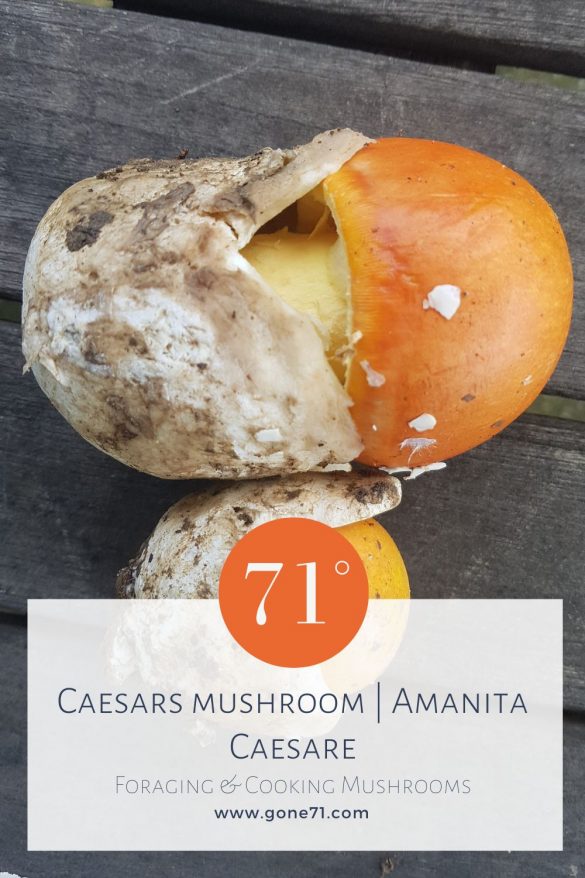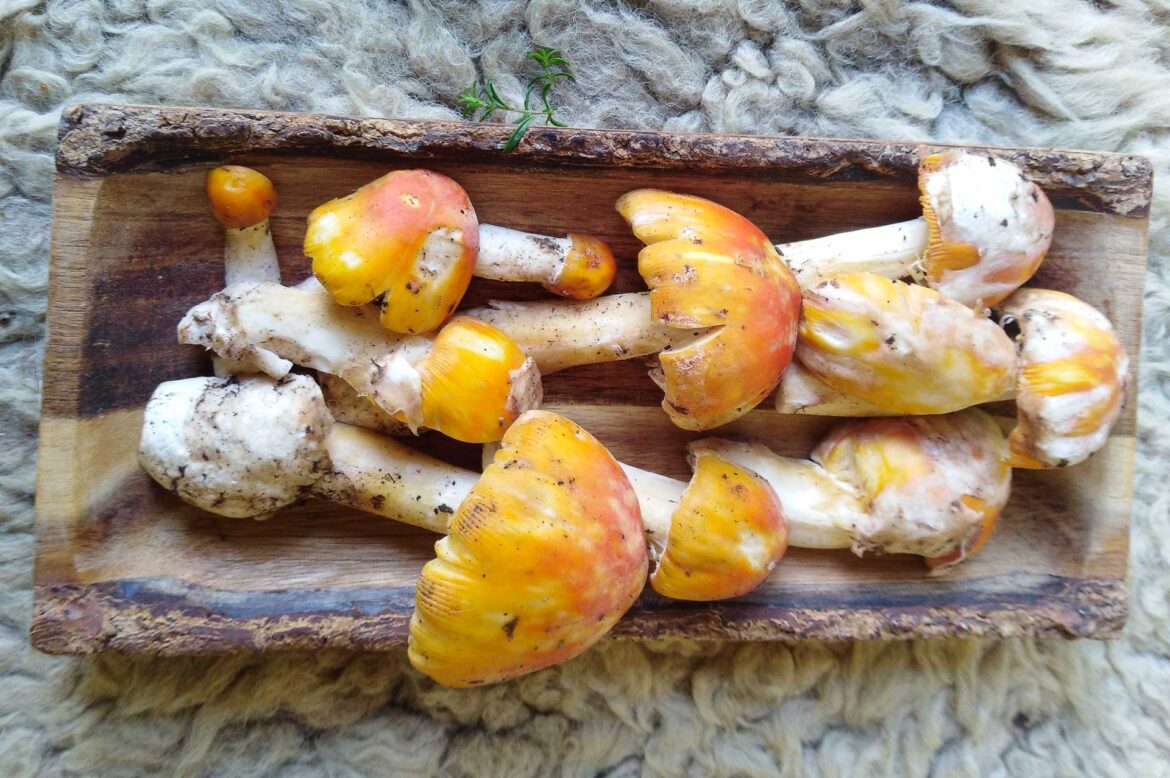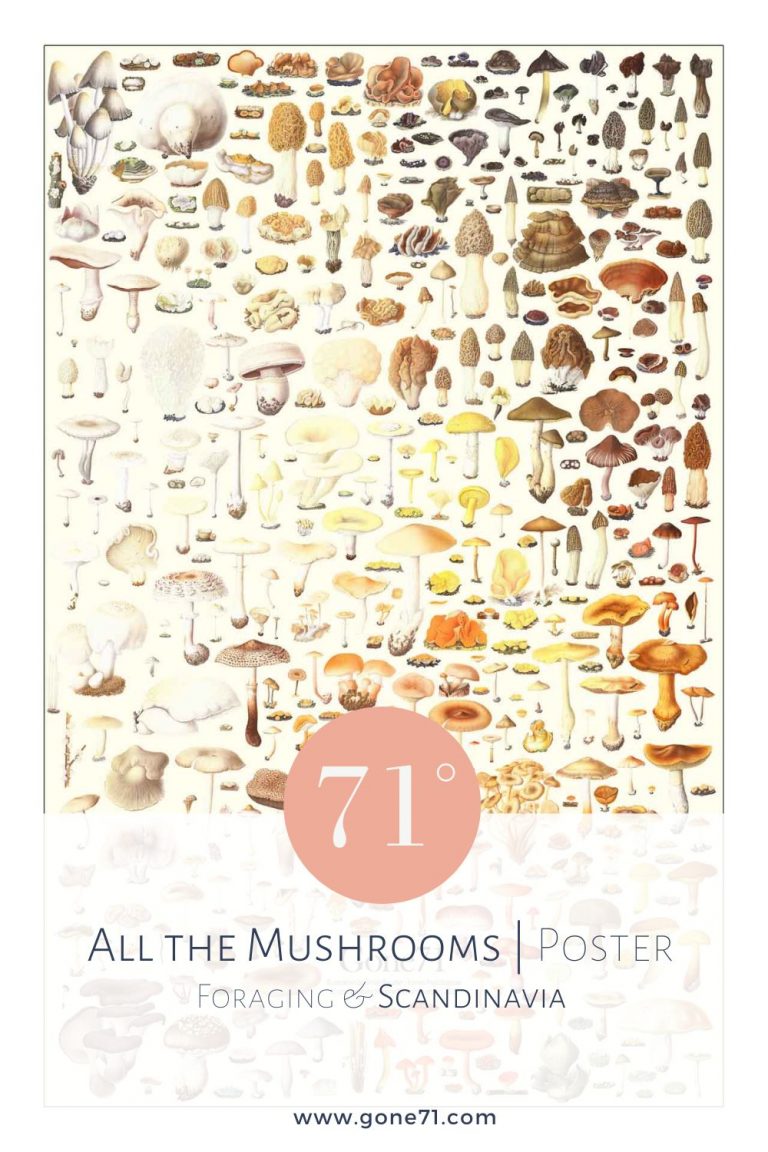swe.: Kejsarflugsvamp | fin.: Keisarikärpässieni | dt.: Kaiserling, Orangegelber Wulstling
“The cap of these mushrooms was called [by the Romans] thyrsus and the stalk colliculus. The Kaiserling was prepared in boiled wine with a bunch of coriander or in a sauce with pepper, eggs, honey, oil, etc.” (Dierbach, 1831)
The caesar’s mushroom is a very elusive delicates from the Amanita family. This representative can usually be found in southern parts of Europe and is usually not found in Scandinavia.
The caesar’s mushroom is little known in the English-speaking realms of the world and yet it is one of the most famous and coveted edible mushrooms of all. Its fine flesh is ideal for raw consumption and for us it far surpasses the taste of the otherwise highly valued porcini mushroom.
However to rehabilitate the poisonous Amanita family we want to mention this highly sought after mushroom here as well. Amanita caesarea ranks upon the most expensive and exquisite mushrooms in the world.
Be aware that this mushroom is strictly protected in some countries (e.g. Germany, Solvenia…) so make sure to be aware of the local rules.
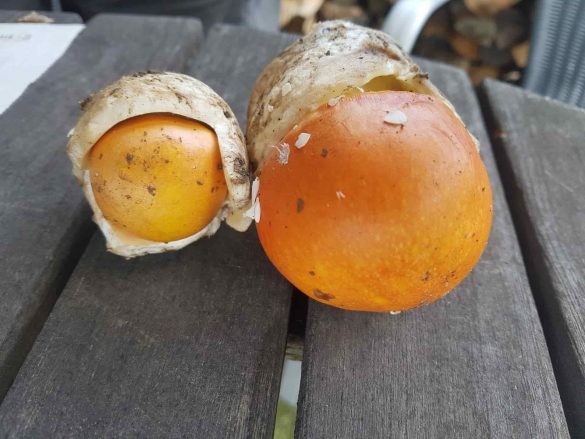
height: 7 – 17 cm
cap diameter: 3 – 12 cm
months: June – October
colours: yellow to red-orange cap [similar to fly agaric (Amanita muscaria) without scales], foot can be yellow
habitat: deciduous forest, mixed forest, parks
smell: pleasant, nutty
consumption: cooked – one of the few mushrooms edible raw
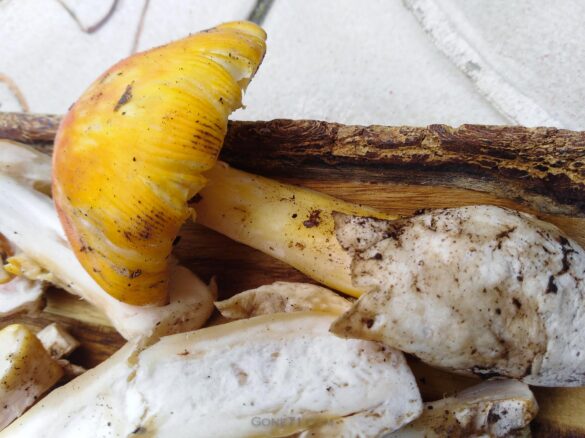
Appearance & habitat of the Caesar’s mushroom
The young specimens are completely covered in the velum and it can
have an appearance like hatching from an egg. It can easily be mistaken
for a red fly agaric or also a death cap which makes it delicate to
pick. However, finding one is a special moment in every mushroom hunters
career. And with an on going shift in the continental climate we may
see this delicacy sooner or later more frequently in the northern
realms. One side of global warming that we can certainly get used to.
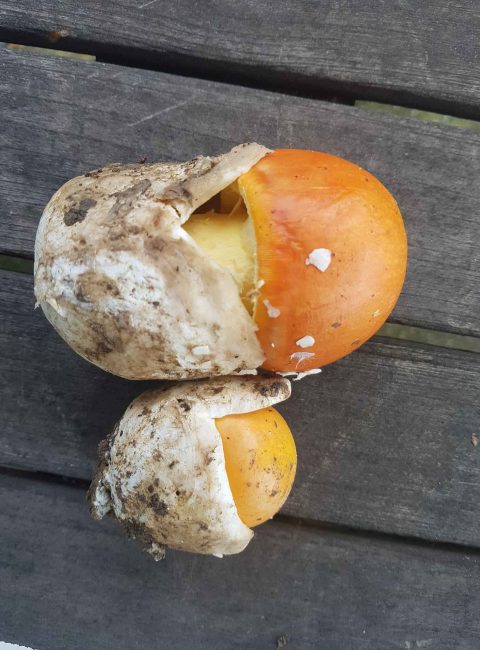
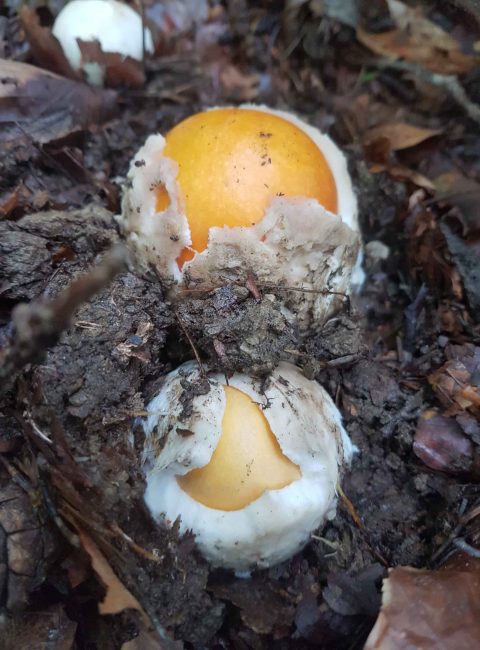
Lookalikes and confusion of caesar’s mushroom
Still known as Boletus in ancient Rome, it has little in common with the common porcini (Boletus edulis). On the contrary, its closest relatives include the fly agaric, the highly poisonous panther mushroom and also the absolutely deadly death cap.
Unwary foragers can confuse these species with the very (poisonous) fly agaric. High caution and good knowledge of the subject is therefore adviced when foraging the caesar’s mushroom. Sometimes fly agaric specimen can appear without there typical white velum scales leading to confusions. On the other hand, very young specimen of the Caesar’s mushroom can be confused with the young stages of the death cap (white lamellae!), which are absolutely deadly as well as other poisonous members of the Amanita family. If you consider all the characteristics from the current mushroom literature, this delicacy should be identified quite easily though.
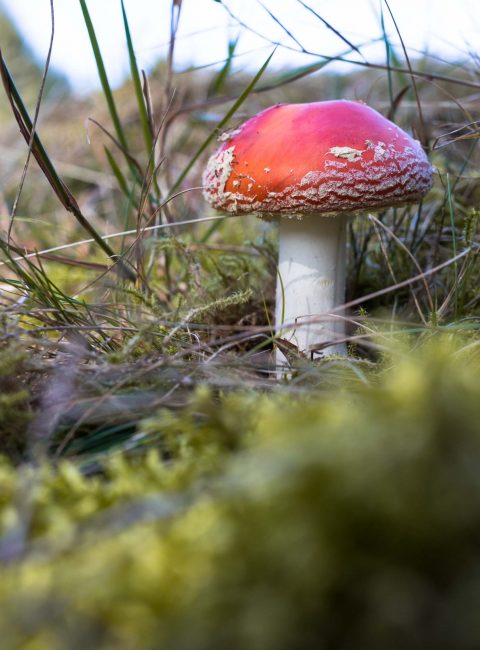
Foraging the Caesar’s mushroom
From our own experience we are inclined to say that in our latitudes one is more likely to be found by the mushroom than to find it in an active search. Its preferred habitat are deciduous forests with beech, oak and chestnut stands where it can appear from July to October. Caesar’S mushrooms have often revealed themselves to us while collecting chestnuts in autumn. When young, the intense orange cap hatches from a white velum egg which initially completely envelops it. Later, its full glory is revealed in its yellow ringed stem, golden yellow gills and an umbrella-shaped orange cap. Like all amanita it has a bulbous base.
In countries like Germany the mushroom is completely protected due to its rarity and may not be collected.
Culinary history of the Caesar’s mushroom
Caesar’s mushroom were already valued by the ancient Greeks and at the latest in the Roman Empire under Caesar they were elevated to the rank of exclusive delicacies. An elite mushroom reserved mainly for the upper class, considered Caesar’s favorite mushroom. Hence the imperial name that translate similar in other languages like the German “Kaiserschwamm” or “Kaiserling” or the Swesih “Kejsarflugsvamp”. A special dish (boletare) for the preparation of these mushrooms testifies to their importance within Roman society.
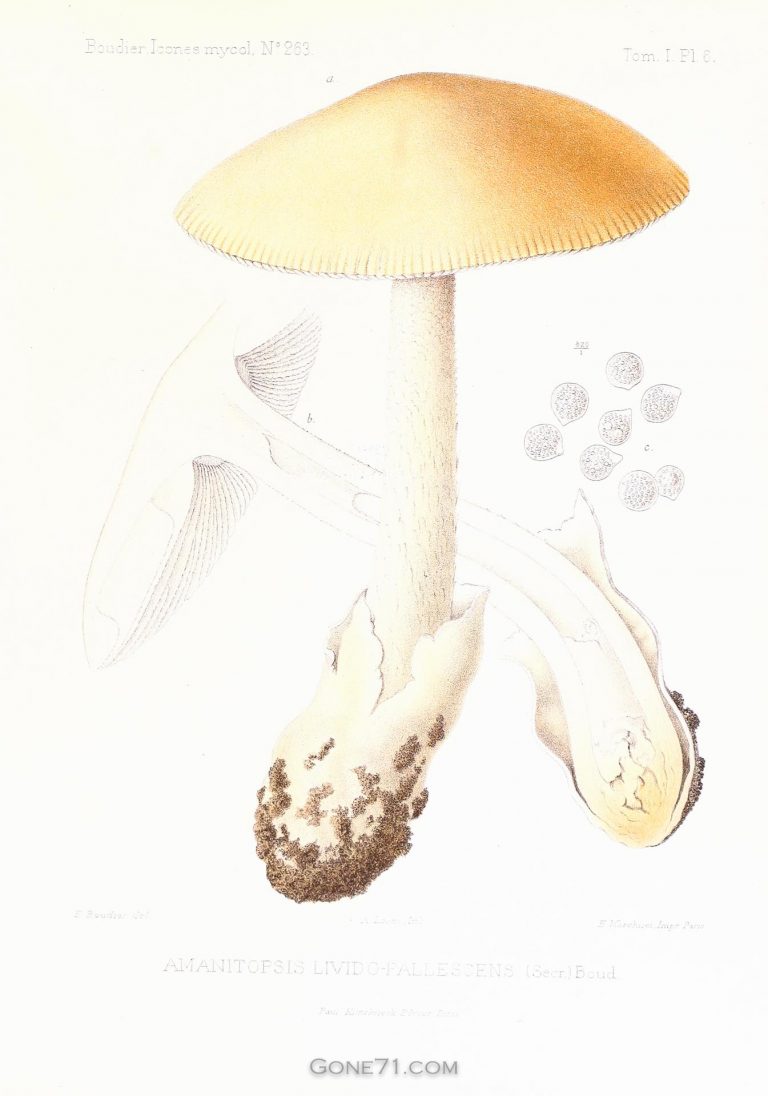
Cleaning the Caesar’s mushroom
Extreme care should be taken when cleaning this treasure. Water should be avoided as far as possible. Heavy dirt can be wiped off with a damp cloth. With their mild, nutty taste, they are ideal for raw preparation as carpaccio, especially when young. The remnants of velum are removed with a knife and the mushroom is usually cut in very thin slices.
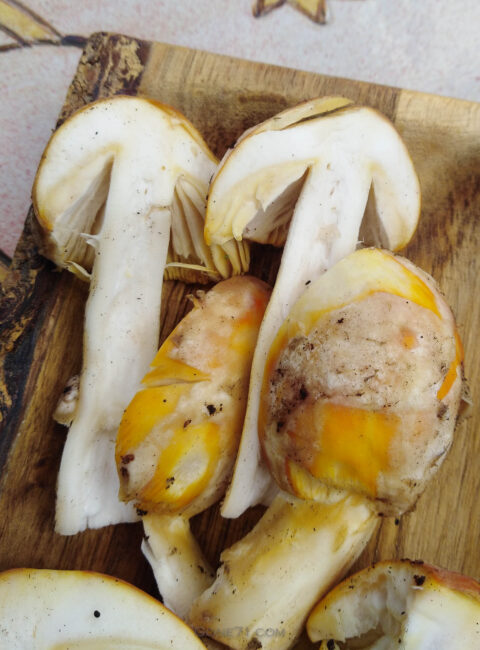
Caesar’s mushroom in the kitchen
This mushroom is one of the view that is considered a delicacy when eaten raw with olive oil as carpaccio. In other recipes they are sliced very fine and fried in butter or olive oil as we did here. For this mushroom, less is more!

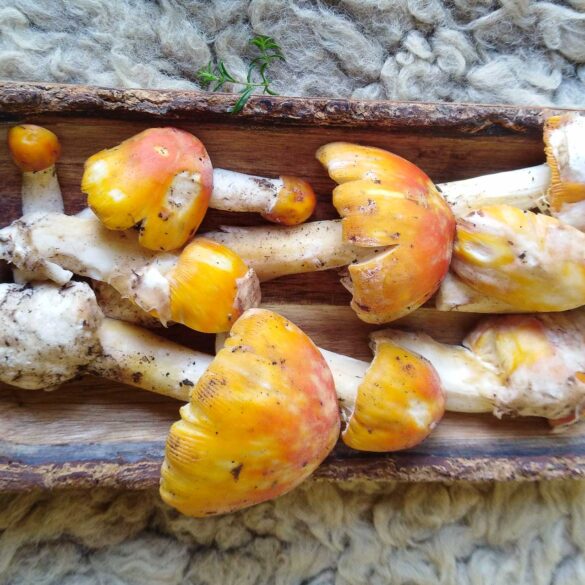
Caesar's mushroom (Kaiserling) in olive oil
Ingredients
- 300g fresh caesar mushrooms
- olive oil (alternatively butter)
- salt
- parsley
Instructions
- Clean the fresh mushrooms carefully as described above
- Cut into fine slices
- Heat oil (or butter) in a pan
- Sear the mushrooms
- Season with a pinch of salt
- Sprinkle parsley on top
- Arrange and enjoy
We have compiled this overview with the best of knowledge and belief, but do not claim to be complete and reserve the right to make errors.
Learn more about poisonous mushrooms and mushroom poisons here
↓↓↓
Find some inspiration in other mushroom recipes
↓↓↓
